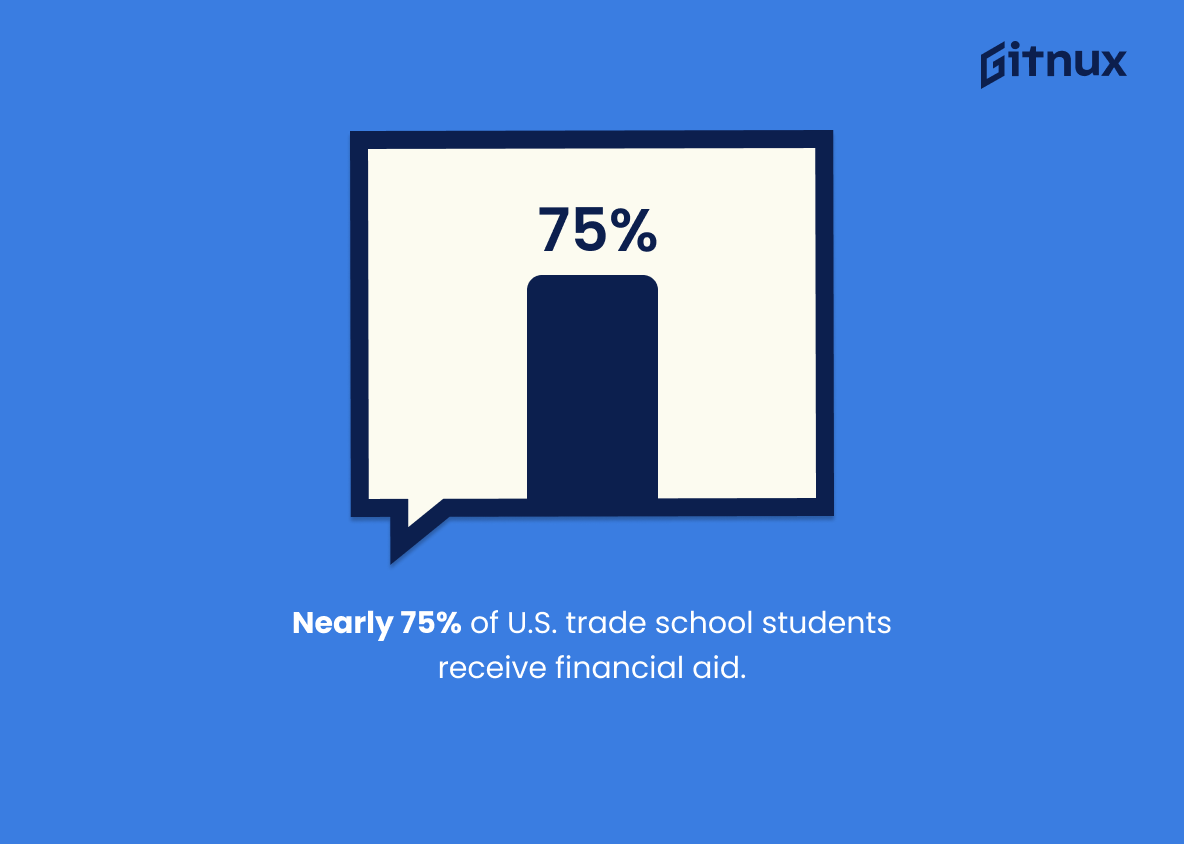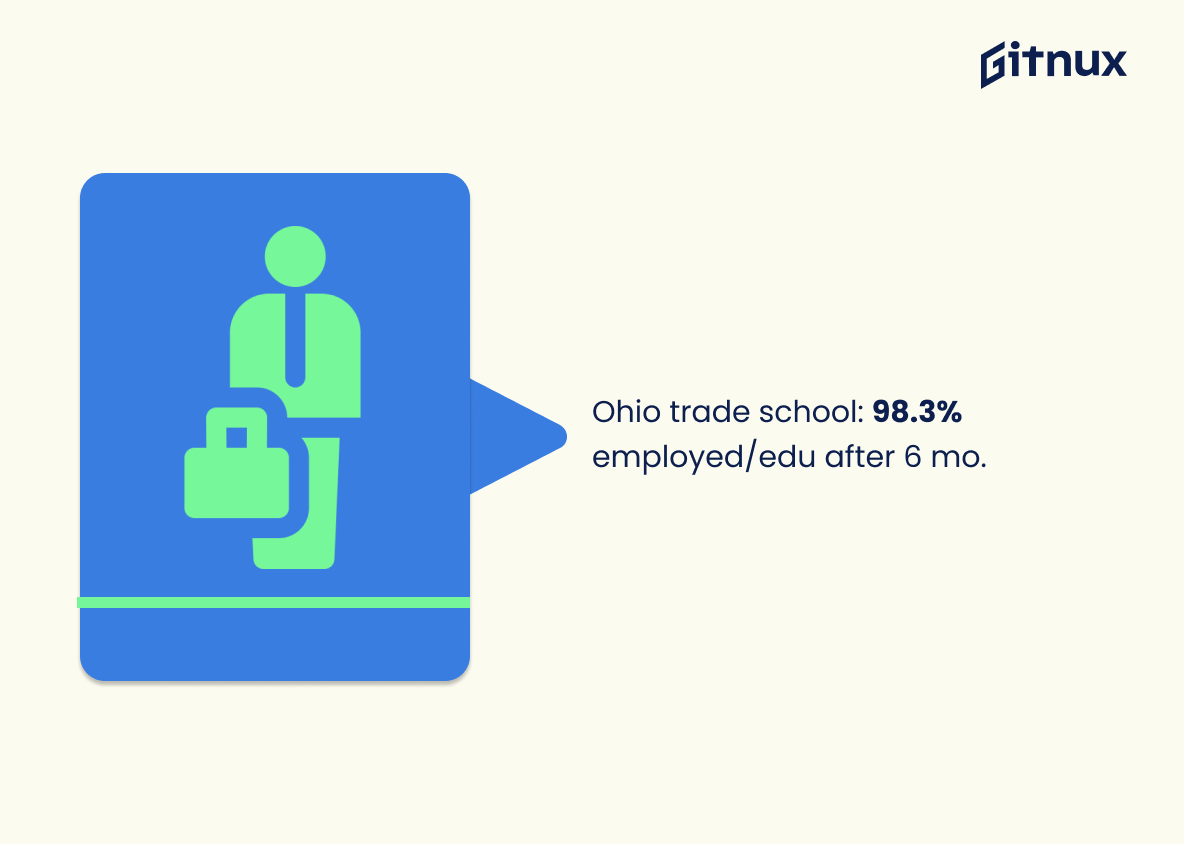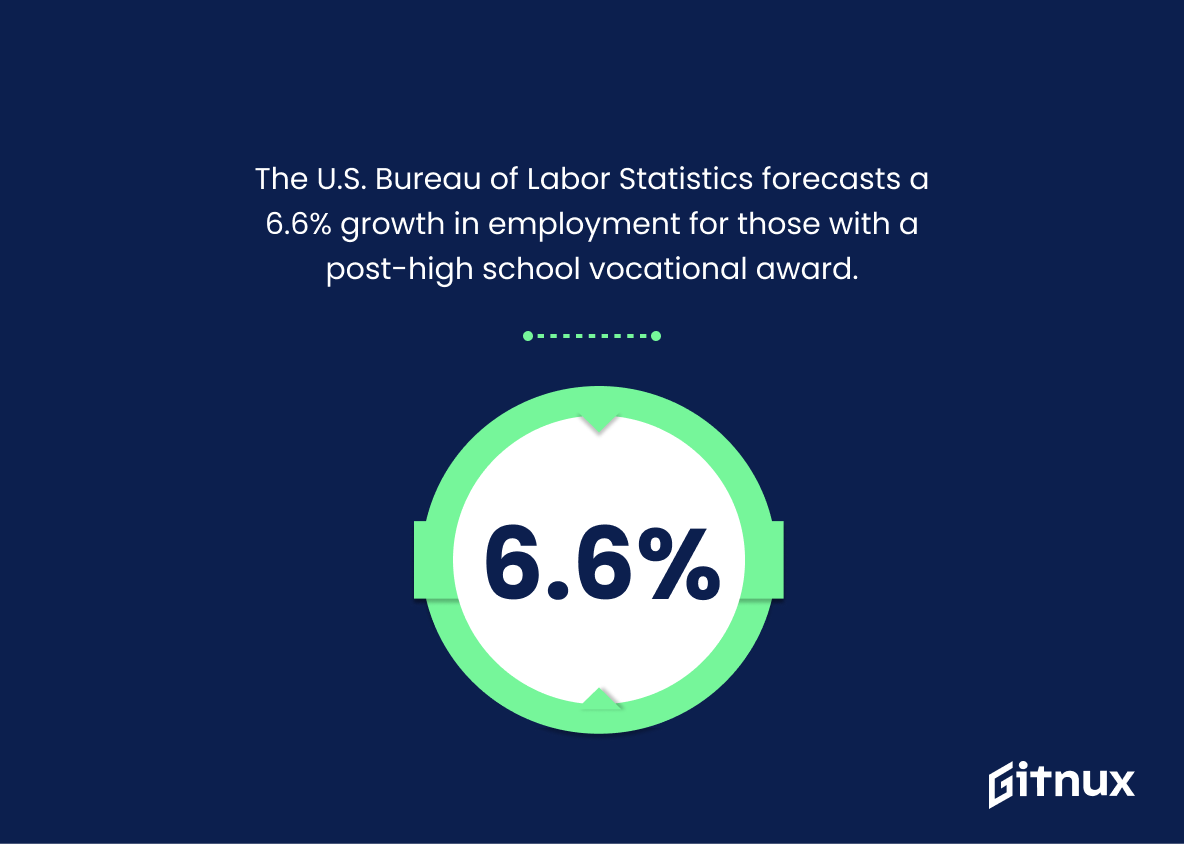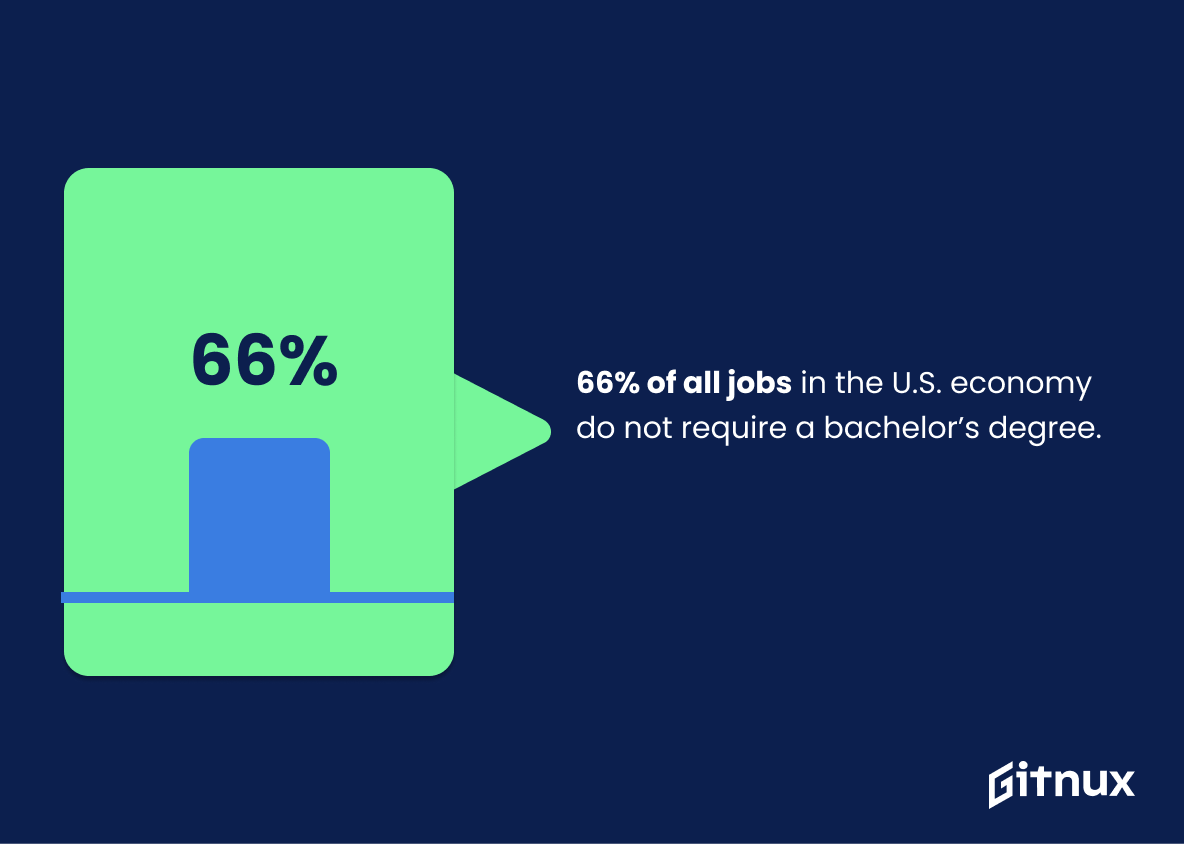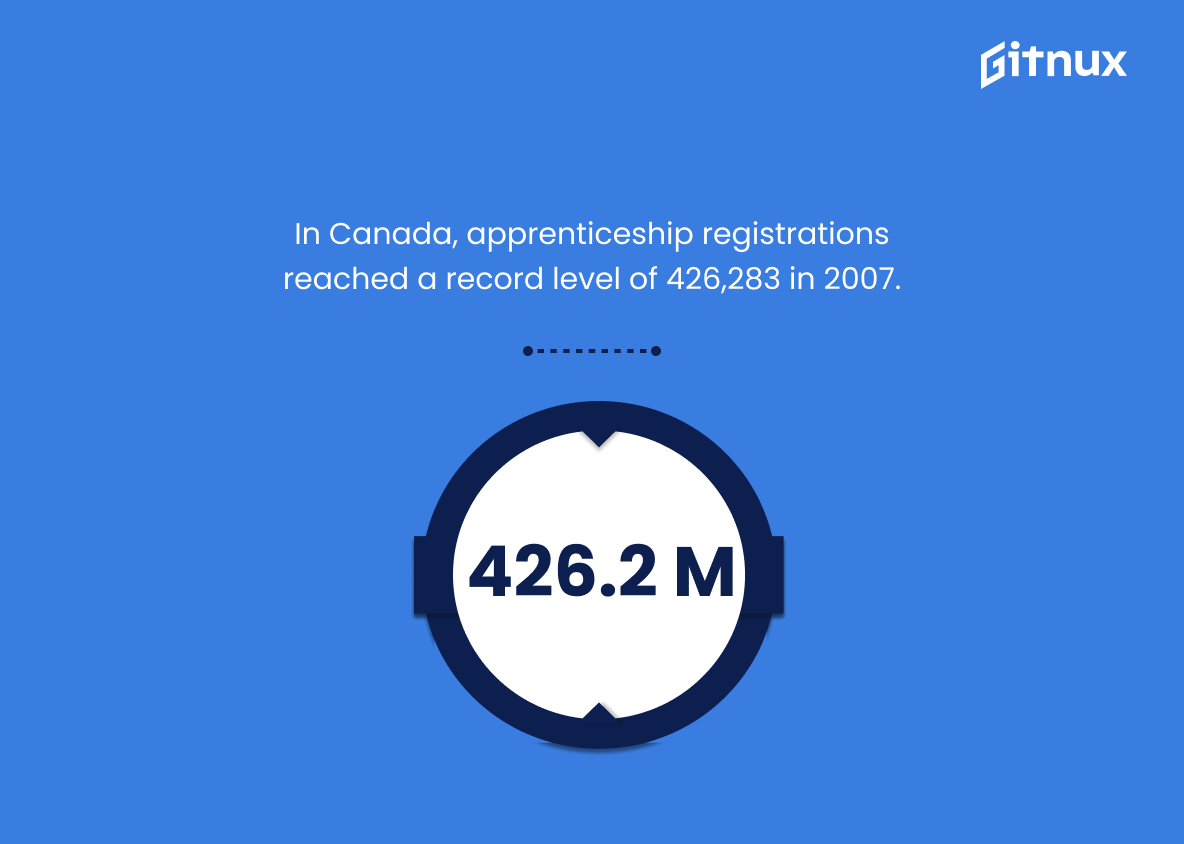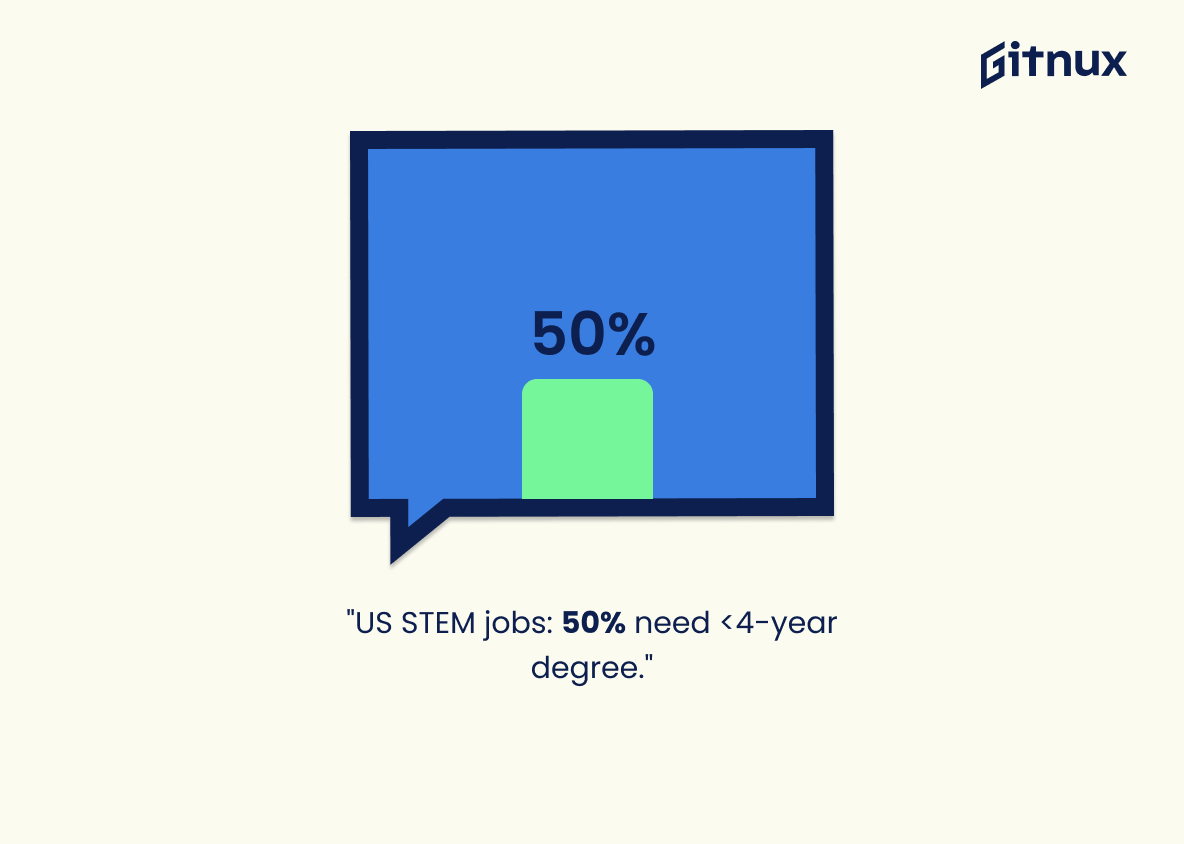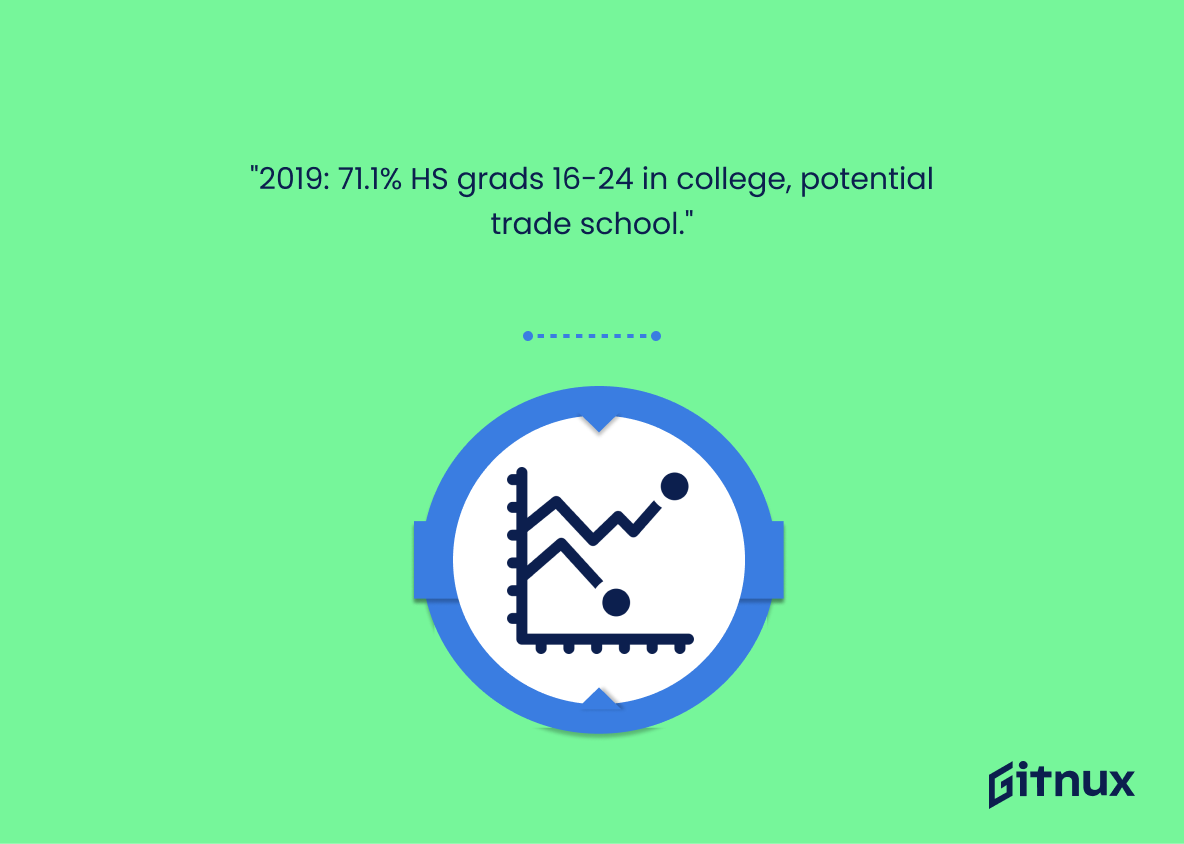Delve into the intricate world of trade schools, a fundamental pillar in shaping our labor force through the lens of compelling statistics. Trade school, also known as vocational or technical schools, are often overlooked yet essential elements of our education system. They can be stepping stones for many high-demand and lucrative careers. This blog post is designed to illuminate the critical role that trade schools play by examining significant data and statistics. From enrollment figures, graduation rates, to emerging industries employing trade school graduates and earnings potential – we’ll dissect and interpret the numbers that paint a vivid picture of the current landscape of trade schools. Whether you’re considering this practical education route or simply looking to understand the broader narrative of the American workforce, this deep dive into trade school statistics promises to be enlightening.
The Latest Trade School Statistics Unveiled
68.2% of graduates in the USA who attended trade school got work in their fields of study, compared with 57.5% of graduates with an academic degree.
Highlighting these percentages allows readers of the blog post to gaze upon the contrasting perspectives of vocational and academic education. It brings to light an intriguing trend that the potency of trade schools in securing field-specific employment surpasses that of traditional academia. In effect, it sews in an element of surprise and thought-provocation, challenging the commonly held belief about the supremacy of academic degrees in job markets. It quantitatively elucidates the value trade schools provide in matching education to job availability, a crucial consideration for students plotting their career trajectories. Moreover, this comparison seamlessly emphasizes the practical, real-world benefits of trade school education, paving the path for a profound discussion about the nuances of vocational training.
Nearly 75% of U.S. trade school students receive financial aid.
Highlighting the fact that nearly 75% of U.S. trade school students receive financial aid, serves as a beacon of opportunity for potential students who may be deterred by cost concerns. It accentuates the realistic possibility of attaining professional education without the burden of enormous financial debt. This could be the motivation an individual needs to pursue a career through trade school, reassured by the impressive support network that financial aid represents. Therefore, this not only changes the narrative around the affordability of quality education but promotes inclusivity by expanding access to a diverse range of economic backgrounds.
The average trade school degree costs $33,000, compared to $127,000 for a bachelor’s degree.
Unraveling the strings of the above financial figures paints an intriguing tale of the education world, particularly in the comparison between trade schools and traditional colleges. The eye-opening revelation lies in the solidly wider monetary gap; $33,000 for a trade school degree versus a hefty $127,000 for a bachelor’s degree. Evidently, the price tag dangling from trade school education is considerably less frightening, tipping the scale of choices for students making pivotal educational decisions.
It unspools the message that pursuing a trade school education can potentially free students from the shackles of overpowering student loans often associated with four-year colleges. Moreover, this revelation brings to light an enticing incentive to delve into trade practices, especially for those who seek an affordable yet substantial pathway to achieve promising career prospects. Thus, this statistic curates a platform for dynamic discussion on the value, investment, and potential returns in the realm of trade school education.
98.3% of Ohio technical and trade school students are employed or continuing their education within six months of graduation.
The illuminating statistic of 98.3% employment or further education rate within six months of graduation among Ohio’s technical and trade school students underscores a noteworthy conclusion: the very effectiveness of these institutions in gearing graduates for career success. This percentage paints a vivid picture of students’ journey post-graduation and further propels the narrative on the value of choosing trade schools as a viable alternative to traditional four-year colleges. It speaks volumes about the quality of education, hands-on training, and industry-specific skills developed at these schools, thereby cultivating confidence among prospective students and their families in the promise of a bright future in the workforce or further educational pursuits. A high post-graduation success rate bespeaks the empowering role these schools hold in ensuring the graduates are not just degree holders, but are equipped with the necessary skill set demanded by employers or the next stage of their education.
The U.S. Bureau of Labor Statistics forecasts a 6.6% growth in employment for those with a post-high school vocational award.
In the vibrant realm of Trade School Statistics, the forecasted 6.6% employment growth for those holding a post-high school vocational award, as outlined by the U.S. Bureau of Labor Statistics, shines strikingly. It gives prominence to the pivotal role trade schools play in nurturing employable skills. This prediction, steeped in statistical accuracy, emphatically underscores the increasing demand and projected employment surge for trade school graduates. It offers a refreshing perspective, highlighting the worthiness of trade schools as catalysts for employment growth and economic progression. Infusing the blog post with this statistic will underscore the blossoming opportunities in the vocational sector, inviting readers to consider trade school education as a lucrative pathway worth exploring.
Trade school enrollment in the U.S. has more than doubled in the past decade, reaching over 16 million in 2015.
Highlighting the statistic that trade school enrollment in the U.S. has more than doubled in the past decade, culminating to over 16 million in 2015, paints a vivid picture of an evolving education landscape. It underscores a growing shift towards skill-oriented training, providing quantitative proof that more Americans are embracing trade schools as viable options for post-secondary education. This radical increase gives weight to the position of trade schools as significant players in the country’s educational sphere, pointing towards a future where traditional and vocational education co-exist as equals. As such, the blog post uses this striking statistic to anchor a narrative about the rising influence and popularity of trade schools.
Electricians, a common career for trade school graduates, is projected to grow 8% from 2019 to 2029.
Highlighting data points like ‘The projected 8% growth for electricians from 2019 to 2029’ offers deep insights into the flourishing opportunities in the trade school sector. Such numerical evidence carries weight, underscoring the viability and attractiveness of trade-related careers for prospective students. In an era where university degrees are often associated with job saturation and a competitive market, showcasing this growth rate in the field of electrical work serves as a beacon, guiding those contemplating unconventional educational paths. This breakaway from neck-to-neck competition in traditional fields could potentially lead to better job security and satisfaction. Therefore, incorporating this statistic into a blog post on Trade School Statistics provides comprehensive understanding, and propels necessary dialogue about educational diversity and professional prosperity.
More than 70% of construction companies nationwide are having trouble finding qualified workers, many of whom are trained through trade schools.
Highlighting the statistic that over 70% of construction companies nationwide struggle to find qualified workers is eye-opening within a Trade School Statistics post. It underscored the substantial demand for skilled trade workers, thereby surfacing the pivotal role of trade schools in filling this workforce gap. The data amplifies the importance of trade schools as a training ground for professionals, directly addressing the industry’s staffing crisis. This very fraction echoes the untapped potential of trade schools and stresses the employment opportunities waiting for aspiring professionals, making it an illuminating beacon within the spectrum of career paths.
66% of all jobs in the U.S. economy do not require a bachelor’s degree.
Drawing attention to the statistic that 66% of all jobs in U.S. don’t require a bachelor’s degree sets a compelling stage for our exploration of trade school statistics. It underlines the immense potential and scope available for those considering alternative education paths. In the kaleidoscope of employment opportunities, it becomes evident that the bachelor’s degree – often viewed as a necessary key to unlock a successful career – may not always be the golden ticket. Thus, the relevance of trade schools and vocational training jumps into sharper focus, poised as viable and respected routes to employment. These alternative paths could pave the way to achieving career goals and financial stability for many, revolutionizing perceived norms of education and employment.
In Canada, apprenticeship registrations reached a record level of 426,283 in 2007.
Highlighting the statistic of apprenticeship registrations peaking at 426,283 in Canada in 2007, serves as an illuminating beacon within our discussion on Trade School Statistics. It infuses a narrative of a growing thirst among Canadians for practical, hands-on education, which is provided by trade schools. This data point not only resonates with the increasing trend towards vocational education as a preferred choice, but also establishes Canada as a focal point of this transformative shift. In essence, this statistic explicates the popularity and potential of trade schools in shaping an army of skilled professionals, capable of powering economies.
California community colleges reported a 53% completion rate for Career Technical Education (CTE) students.
The vitality of the quoted statistic cannot be trivialized in the realm of Trade School Statistics. Anchoring on the reported 53% completion rate for Career Technical Education (CTE) students in California community colleges, it paints an illuminating picture of the prevalent educational trends and success rates in vocational and technical training. This solid figure is instrumental in shedding light on the effectiveness of trade or vocational schools, perhaps serving as a benchmark for other states or regions. Additionally, it emphasizes the importance of practical, skills-based learning in leading students through the completion line, thus impacting employment rates and the quality of the workforce. To put it concisely, it infuses statistical precision to illustrate the real-world implications of trade schooling.
Nearly half of the science, technology, engineering, and math (STEM) jobs available in America require less than a four-year degree.
Reflecting on this intriguing statistic—nearly half of the American STEM jobs require less than a four-year degree—it distinctly shapes our understanding of Trade School Statistics. This finding is like a beacon, illuminating the reality that a grand number of lucrative STEM careers are accessible without the traditional four-year degree.
This demonstrates the potential and value of trade schools, offering an alternative, cost-effective educational route to a prosperous career. It unravels a narrative that frames trade schools as vital conduits, channeling aspiring individuals into a booming sector of the job market—STEM. It underscores the worth of considering practical, targeted education and training through trade schools as a bridge into the thriving STEM field.
Thus, it’s not merely a statistic, but a paradigm shift, a testament that dismantles the preconceptions about higher education and STEM careers, presenting the viability of trade schools as a key player in America’s STEM pipeline.
Graduates from Tennessee College of Applied Technology (TCAT) programs have a job placement rate between 75% and 100%.
Highlighting this impressive statistic about TCAT’s job placement rate makes an influential point in a blog post about Trade School Statistics. It vividly illustrates the potential payoff of vocational education, serving as tangible evidence that trade school attendees, particularly those from TCAT, often swiftly transition into the professional world. This draws a compelling picture of trade schools being not just viable, but also potentially prosperous avenues towards successful careers. Quoting a strong success rate between 75% and 100% is not simply a fact, it’s an enticing motivation for prospective students considering this alternative path to traditional higher education.
As of 2018, 55% of skilled trades professionals in the U.S. were aged 45 and over, indicating future increases in demand as these workers retire.
Unveiling the age demographics of skilled trades professionals brings an insightful angle into the future of the industry in the United States. With a notable 55% of them being 45 years or older as per the 2018 data, an anticipation looms over the sector about an approaching vacuum. This age-related revelation envisions an imminent surge in demand as these experienced artisans gradually step into retirement. Amidst a data-driven blog post about Trade School Statistics, such information emerges as a potential catalyst to inspire more youths to enroll in trade schools. It subtly paints a picture of vast opportunities and job security awaiting prospective tradies, effectively piecing together the puzzle of career prospects in the skilled trade sector.
In 2019, 71.1% of high school graduates aged 16 to 24 were enrolled in colleges or universities, leaving a sizable proportion potentially studying in trade schools.
Highlighting the ratio of high school graduates enrolling in colleges or universities, the statistic indicates a significant educational trend. However, what jumps off the page is the unaccounted percentage. This robust fraction, hovering around 28.9%, points towards alternatives to traditional college education, possibly in the form of trade schools. This is noteworthy in our exploration of trade school statistics, as it offers a vivid snapshot of the potential demographic that veers off the beaten path to pursue vocational training. Thereby, it underlines the importance of further investigating this segment, as they may be contributing to the shifting landscape of post-secondary education.
The average cost of two-year trade school is $3,770 per year.
Highlighting the average cost of a two-year trade school, pegged at an annual cost of $3,770, gives potential students a financial marker in their quest for affordable yet quality education. In the labyrinth of decision-making about career paths and educational investments, it serves as a beacon, clearly defining the monetary commitment involved in pursuing a vocational path. This figure, set in the grander framework of trade school statistics, underscores the more cost-effective alternative that trade schools propose in contrast to traditional four-year degrees, potentially shifting the trajectory of career choices for many.
Between 2013 and 2019, Colorado had more than 74% increase in secondary career and technical education (CTE) course participation.
In the realm of Trade School Statistics, the impressive surge in secondary career and technical education (CTE) course participation in Colorado—posting a 74% upward swing from 2013 to 2019—casts a spotlight. This isn’t just a number; rather, it is a testament to the escalating appeal of trade schools over traditional degree paths. It underscores the evolving educational preferences as more individuals tap into the potential of vocational and technical programs. This trend breathes life to the argument that trade schools offer lucrative, sustainable career paths that can keep pace with the demands of today’s dynamic job market. Moreover, it unfolds a promising narrative of an education sector previously overshadowed, now rising to prominence.
Students who complete a career and technical education path have a graduation rate of 93%.
Highlighting a vibrant 93% graduation rate among students who complete a career and technical education path succinctly underscores the effectiveness and efficiency of trade schools. It subtly signals a robust correlation between this educational approach and successful course completion, thereby enhancing the credibility and attractiveness of trade schools. The numeral, bold and brilliant, forms a stark contrast with general graduation rates, lending weight to the argument favoring trade schools. Placed in the realm of trade school statistics, this compelling figure stands out as a persuasive piece of evidence in the case for career and technical education.
Registered nurses, a common trade school certification, are projected to grow 7% from 2019 to 2029.
Underscoring an increase in career opportunities, remarkably, projections point out a 7% growth in registered nursing roles from 2019 to 2029. In the arena of trade school vocations, this metric traces a significant pathway. Registered nursing being a widely chosen trade school certification, the rise in job opportunities is a key identifier of the flourishing demand and considerable value within these educational routes. Essentially, this growth percentage gives readers a clear forecast, underscoring the compelling nature of the trade school path: a blend of rewarding prospects, solid demand, and industry expansion.
The largest number of Australian VET (Vocational Education and Training) program completions in 2018 was in the field of engineering and related technologies, with 97,335 completions, a potential proxy for trade school education.
Looking at the anecdote of Australian VET program completions in 2018, it’s fascinating to delve into the dominance of engineering and related technologies as they climbed to the pinnacle with a whopping 97,335 completions. This not only exemplifies the demand and popularity for these vocational skills but also serves as an indicator or gauge for the state of trade education. What cannot be ignored is how these numbers hold the potential to reflect graduation rates or the magnetic pull of technical schools, which can further inform policy and investment decisions in the realm of vocational education. Ultimately, in the tapestry of trade school statistics, this particular thread gives us profound insight into the trends and appeals in the current VET landscape.
Conclusion
In a rapidly changing job market, trade schools offer quantifiable advantages including time efficiency, cost-effectiveness, and more focused training. The broad array of disciplines available and the burgeoning number of graduates stepping into high-paying careers depict trade schools as a promising pathway for many. Trade school statistics are a testament to this progressive narrative. These vocational paths, continuously evolving with the industry demands, provide extensive opportunities while challenging the unfortunate stigma that hails four-year degrees as the only viable option for successful careers. By shedding light on the value of trade schools through statistical evidence, we highlight their pivotal role in fostering valuable skills, thereby promoting a more diverse and competent workforce.
References
0. – https://www.www.bls.gov
1. – https://www.www.cccco.edu
2. – https://www.tcatknoxville.edu
3. – https://www.www.adeccousa.com
4. – https://www.www.ncver.edu.au
5. – https://www.www.francistuttle.edu
6. – https://www.www.brookings.edu
7. – https://www.cew.georgetown.edu
8. – https://www.www.npr.org
9. – https://www.www.wsj.com
10. – https://www.ohiohighered.org
11. – https://www.studentaid.gov
12. – https://www.www.acteonline.org
13. – https://www.www.skylinecollege.edu
14. – https://www.files.eric.ed.gov
15. – https://www.www.coloradoedinitiative.org
16. – https://www.nces.ed.gov

